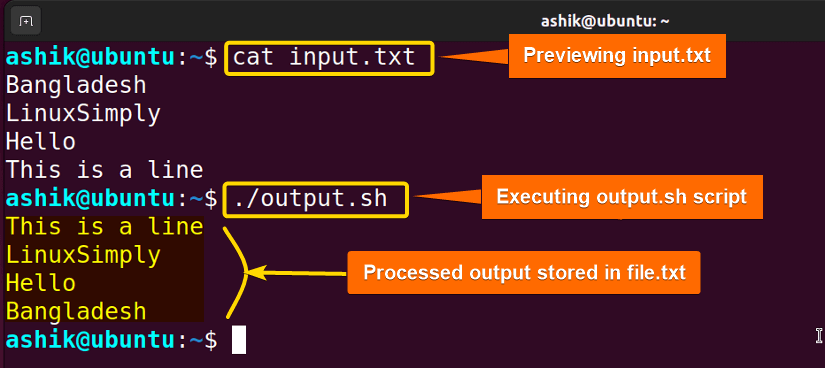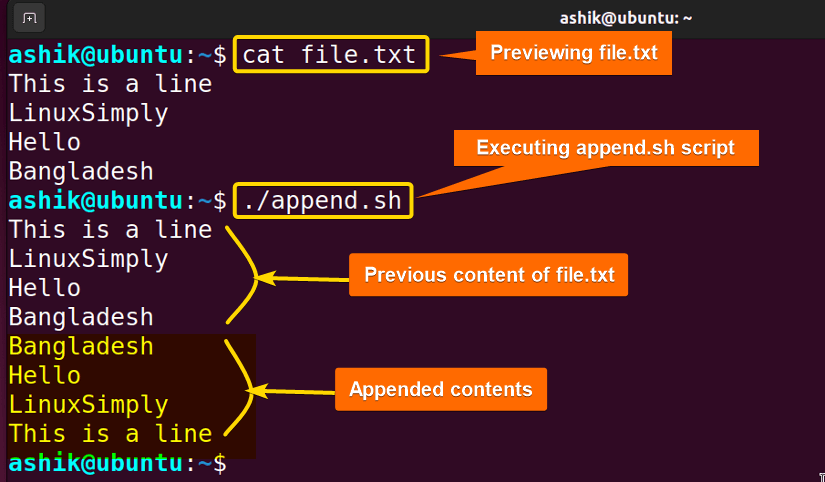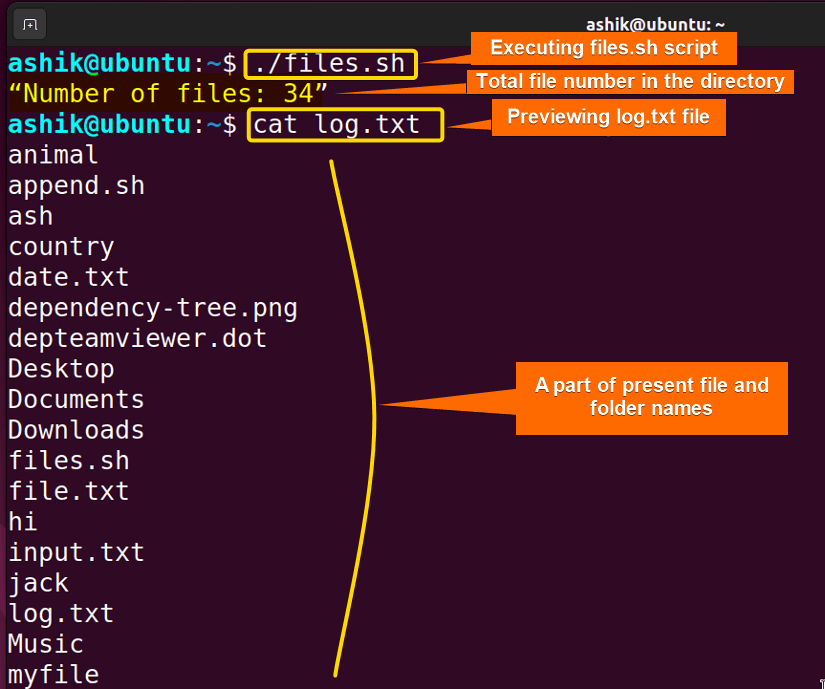FUNDAMENTALS A Complete Guide for Beginners

Redirecting the output of a command to a file through a pipe is a fundamental concept in command-line environments, like Bash scripting. and it involves redirecting the output of a command to a file for further use or storage. This process allows you to save, analyze, or share the output of commands, making it a valuable tool for working with data and automating tasks. In this tutorial, I will discuss the basics of pipe, and how you can use it to redirect the output of a command to a file in Linux.
Key Takeaways
- Learning basics about the pipe to redirect command output.
- Practicing bash script examples of different ways to pipe output to a file.
Free Downloads
Use of Pipe Output to a File
Though it is possible to pipe output in many ways such as pipe to a variable and pipe to another command, piping output to a file is useful in various scenarios:
- Logging: You can log the output of commands to a file for later review, debugging, or auditing.
- Data Extraction: You can extract and save specific information, such as log entries, data records, or error messages, from command output to a file.
- Scripting: When writing Bash scripts, redirecting output to files is crucial for saving data, and creating reports like generating log files.
- Automation: Redirecting output allows you to automate tasks by capturing information and processing it further.
- Sharing: You can save the results of commands to files that you can easily share with others or use in documentation.
4 Cases of How to Pipe Output to a File
In Bash, you can pipe the output of a command to a file using various methods depending on your specific use case. Also, through piping, you can operate many more command-line operations. In this tutorial, I’ll show you four common ways that you can use to pipe output to a file.
Case 01: Pipe Output to a File Using Redirection Operator
In Linux, you can use output redirection to send the output of a command to a file. This operator is denoted by “>”. Generally, the displaying of the standard output (stdout) of a command is changed from the terminal screen to a file or another command’s input by using this operator. However, it overwrites the file’s contents if it already exists. Follow the below steps to check the entire process:
Steps to Follow >
❶ Open the Ubuntu Terminal.
❷ Now, open a file, let’s say, named ‘output.sh’ in the nano editor by using the following command:
nano output.sh➌ Next, write the following script inside the Bash file in the nano text editor:
#! /bin/bash
cat input.txt | sort -r > file.txt
cat file.txtIn the script’s first line, ‘#!’ is shebang or hashbang. It indicates the interpreter to be used for executing the script, in this case, it’s bash situated in the /bin directory. In the next line, the input.txt file is passed to the sort command by using it with the cat command. Then the output is redirected to a file named file.txt’ using the ‘>’ operator. Finally, file.txt is previewed. However, if file.txt’ already exists, the script will overwrite it with the new output. Otherwise, a new file will be created.
➍ Then, press CTRL+S to save the file & press CTRL+X to exit the nano editor.
➎ After that, use the following command to make the script executable:
chmod u+x output.sh- chmod: Changes the permission of files and directories.
- u+x: Argument with chmod command to add the executable permission for the user.
- output.sh: File which you want to make executable.
➏ Finally, run the script by the following command:
./output.sh
Redirect the output of a command to a log file directly from the terminal by the command syntax:
command > filename.txtFor example, I want to log the current date-time to a file named today.txt:
date > today.txtThe date command shows the current date and time. Now, let’s preview the contents of list.txt by:
cat today.txt
Case 02: Pipe Output to a File Using Append Operator
When you redirect a stdout to a file with the ‘>’ redirection operator, it overwrites the file. So, you can use >> instead of >, if you want to append the output of a command to a file preserving the existing content in it. Check out and execute the following script for the purpose.
#! /bin/bash
cat input.txt | sort >> file.txt
cat file.txtAt first, let’s preview the content of the file.txt file by the command below:
cat file.txtNow, execute the script:
./append.sh
Case 03: Pipe Output to a File Using “tee” Command
The tee command is useful in Unix-like operating systems such as Linux for redirecting output. It allows you to save the output of a command to a file and simultaneously see the output in the terminal. This can be handy in various scenarios, such as logging, monitoring, and recording command outputs. Here’s an example of how to use the tee command to redirect output to a file:
date | tee date.txtIt will show the output of the ‘date command’ in the terminal as well as save it to date.txt like the below image.
#! /bin/bash
line=$(ls | tee log.txt | wc -l)
echo “Number of files: $line”In this script, the tee command pipes the output of the ls command to the log.txt file as well as passes it to the wc command. Here, it counts the number of files and stores it in the line variable. Finally, the echo command prints the number of files.
Now, to check whether piping the output to a file is successful, preview the content of the log.txt file by:
cat log.txt
Case 04: Pipe Output to a Variable
You can capture the output of a command and pipe it in a variable in Bash using the read command. It reads a line from stdin and assigns it to a variable. The following script shows the way:
#!/bin/bash
# Capture the current date and time in a variable
date | { read current_datetime;
echo "Current date and time: $current_datetime"; }In this script, the date command’s output is captured and piped in the current_datetime variable. In the first line, the date command outputs the current date-time, and the pipe operator ( | ) sends the output as input for the next command, where the read command reads input from the pipe and assigns it to the variable ‘current_datetime’. Finally, the echo command echoes the variable value
./variable.sh
Conclusion
Piping output to a file is a versatile technique that helps you manage and utilize command output effectively in the Unix command-line environment. Particularly, it is useful for creating logs, monitoring long-running processes, and recording command execution. The redirection operator and tee command provide a flexible way to capture and pipe command output while retaining the visibility of that output in the terminal.
People Also Ask
Related Articles
- How to Read From Pipe in Bash [5 Cases]
- Send Pipe Output to Two Commands in Bash [3 Methods]
- How to Use Double Pipe “||” in Bash [3 Examples]
<< Go Back to Bash Piping | Bash Redirection and Piping | Bash Scripting Tutorial



